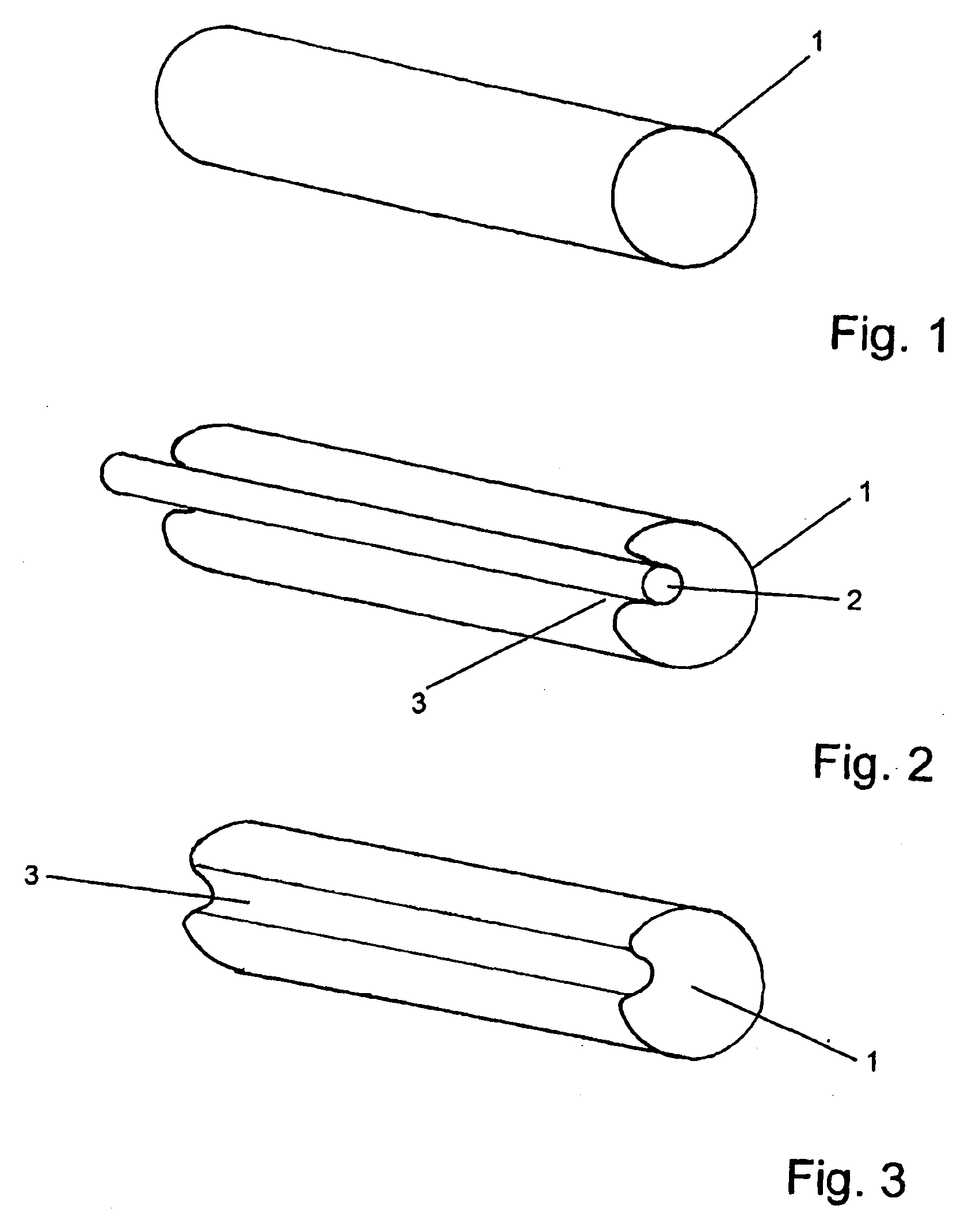Compressible tubular tissue supports
a tubular tissue and support technology, applied in the field of compressible tubular tissue supports, can solve the problems of large radial force of supports, introduction of stents, and damage to surrounding tissue, and achieve the effect of high placement precision and convenient fitting
- Summary
- Abstract
- Description
- Claims
- Application Information
AI Technical Summary
Benefits of technology
Problems solved by technology
Method used
Image
Examples
Embodiment Construction
[0034]For the purposes of the invention, stents are generally preferably composed of a polymer in the form of shape-memory material.
[0035]For the purposes of the invention, the polymers can include, for example, thermoplastics, blends and networks. Composites composed of biodegradable SMP with inorganic, degradable nanoparticles are also suitable.
[0036]The stents of the invention include stents made of an SMP material as well as stents having an underlying structure composed of a biodegradable plastic, embedded or coated with an SMP material. These two substantive designs have a number of advantages.
[0037]Stents composed in essence of SMP materials use the SMP material to determine the mechanical properties of the stent. By virtue of the fact that the materials described below are used for this purpose, good tissue compatibility is ensured. Furthermore, as described above, minimally invasive implantation and / or removal of these stents is possible. The SMP materials moreover have rel...
PUM
 Login to View More
Login to View More Abstract
Description
Claims
Application Information
 Login to View More
Login to View More - R&D
- Intellectual Property
- Life Sciences
- Materials
- Tech Scout
- Unparalleled Data Quality
- Higher Quality Content
- 60% Fewer Hallucinations
Browse by: Latest US Patents, China's latest patents, Technical Efficacy Thesaurus, Application Domain, Technology Topic, Popular Technical Reports.
© 2025 PatSnap. All rights reserved.Legal|Privacy policy|Modern Slavery Act Transparency Statement|Sitemap|About US| Contact US: help@patsnap.com


